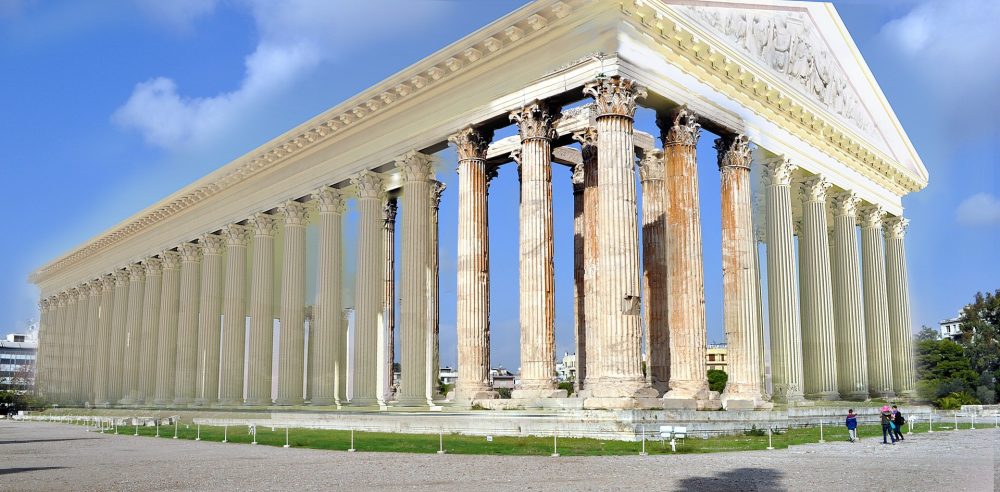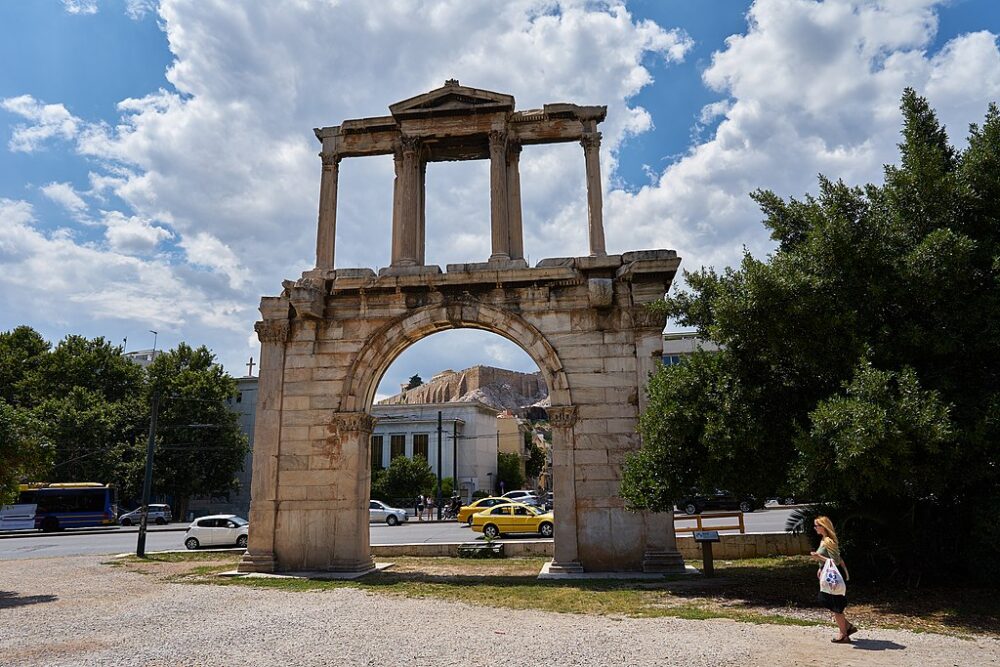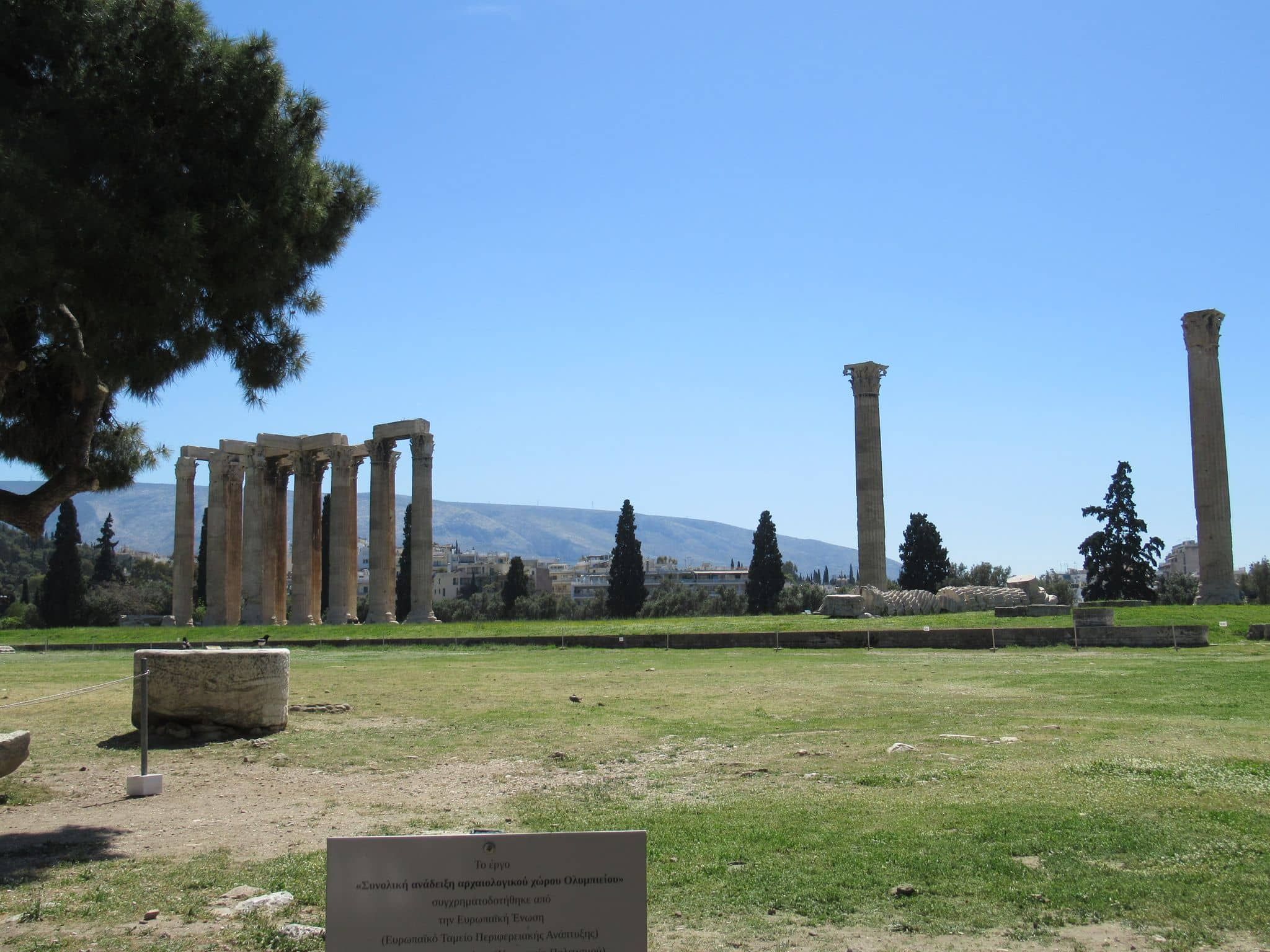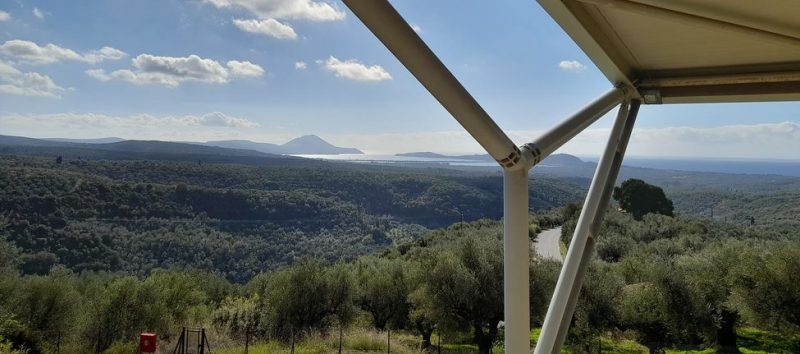A large esplanade between Avenues Amalias, Olgas and Callirhoè features 15 huge Corinthian columns. A 16th, whose scattered drums can be seen, fell to the ground in 1852 following a terrible storm. These are the ruins of the colossal temple dedicated to the God Zeus, also known as the Olympieion or Temple of Olympian Zeus, which Aristotle compared to the Pyramids of Egypt.
Practical information: times, prices and how to get there?
Opening hours
Site opening hours are :
- 08:00 to 17:00 November to March
- 08:00 to 19:00 April to October
- Closed on: January 1, March 25, May 1, Orthodox Easter Sunday, December 25 and 26.
More details on the official website.
Prices and tickets for the Temple of Zeus – Olympieion
- 20€ Full price
- 10€ Reduced rate for European citizens over 65 between October 1 and May 31. During the summer months of June to September, the full rate also applies.
- Free for European children and young people up to the age of 25, for non-European children up to the age of 18, and for disabled people and those accompanying them, on presentation of proof
- Free admission for everyone: March 6, April 18, May 18, the last weekend of September, October 28, and the 1st and 3rd Sundays of the months from November to March.
Tickets can be :
- bought on site (beware of queues in high season)
- online on the official website (non-refundable). Selection: Attica / Olympieion.
- on Civitatis: Full rate Ticket for Temple Olympian Zeus
- on Get Your Guide, full-price ticket and audioguide in English (which we haven’t tested, but which seems to be succinct)
- a combined ticket Acropolis + 1 other site is available online on the GetYourGuide website. Non refundable.
How to get there?
- Subway: Syntagma (line 2 & 3), Acropolis (line 2)
- Buses: 057, 103, 108, 111, 155, 200, 208, 209, 227, 237, 856, A3, A4, B3, B4
- Tram: 4
- Multi-stop buses: most hop-on hop-off bus tour stop here.
Visit the site
- in a little group: with Alternative Athens
The history of the Temple of Zeus in Athens
The temple was built on a rectangular terrace 205.60m long and 129.90m wide. It was surrounded by a powerful perimeter wall of Piraeus stone, largely preserved to the present day and supported by buttresses every 5.30m. The total perimeter was 668m, roughly equivalent to the four stadiums indicated by Pausanias.
Legend attributes the consecration of the first temple to Zeus to Deucalion . It is said to have been built in thanksgiving to Zeus, for it is here that the last waters of the flood flowed into the sacred river of Ilissos.
An ambitious project
Too ambitious…
Around 515 BC, the Pisistratides tyrants began building a colossal Olympiaion. They envisaged ionic columns even more imposing than those of the Temple of Zeus in Olympia (the largest of all Greek temples). However, due to the scale of this over-ambitious project and the fall of the tyrants in 510, the temple remained unfinished.
Work resumes on the Temple of Zeus… but still unfinished
Later, in the Hellenistic period, in 175 BC, another ruler, Antiochus IV Epiphanes, resumed the work. He changed the orientation, adopted the Corinthian order and used white pentelic marble. After the death of Antiochos in 164 BC, work was interrupted.
The Romans get involved
After the invasion of Athens by Roman troops, the Roman general Sylla had some of the temple’s columns and capitals transported to Rome in 86 BC to decorate the Capitol.
Finally, another Roman emperor, Hadrian, completed the building between 125 and 130 AD. He even consecrated the temple in 131-132 AD during the opening ceremony of the Panhellenic festivities. In the cella, he placed his own statue, made of gold and ivory, near the Zeus statue.
The Temple of Zeus falls into disrepair
During the Turkish occupation, the temple, known as Hadrian’s Palace, was seriously damaged. The drums of the columns were destroyed to make lime.
What was the temple of Olympian Zeus like?

The Olympieion was a dipteran temple. That is, it had 2 rows of 20 columns on the long sides and 3 rows of 8 columns on the other two, with the corner columns counted twice. It comprised a total of 104 Corinthian columns.
The main temple was divided into three parts:
- The pronaos: an enclosed space in front of the temple
- The cella: home to the colossal chryselephantine statue (in gold and ivory) of Zeus, as well as the statue of the emperor Hadrian, who was probably worshipped as a god in the temple.
- The adyton: a reserved area where no one could enter.
Inside or just outside the perimeter wall, there were other buildings and sanctuaries, mostly dating from the Classical period.

The Corinthian order
The Corinthian order is the most recent of the three Greek temple orders (Doric, Ionic and Corinthian).
According to legend, Callimachus was the inventor of this order. The sculptor is said to have visited a cemetery one day, and seen a woman going to place a basket filled with acanthus leaves on her daughter’s grave. Acanthus is a plant with large, sharply cut leaves. He would therefore have drawn inspiration from it to create the so-called Corinthian capital. This one, in fact, imitates acanthus leaves, which are found identically on all four sides.
Hadrian’s Gate or Arch of Hadrian
Roman emperor Hadrian, benefactor of Athens
Opposite Olympia Park, on Avenue Amalias, stands Hadrian’s Arch. Emperor Hadrian (117-138 AD), the greatest benefactor of Athens during the Roman period. In fact, he donated a number of buildings as a tribute to the city.
He even extended the Athens city network to Ardittos Hill and the stadium. In commemoration of this expansion, the Athenians built this triumphal arch, in keeping with Roman tradition, right where the old city ended and the new one began. The work was completed in 131 A.D. It is highly probable that the emperor crossed the gate with great pomp and ceremony to inaugurate the temple of Zeus.

A better understanding of Hadrian’s Gate
The gate, 18m high and 13m wide, is made of pentelic marble. It consists of two levels. The first is built in the Roman style, with an apse opening in the middle, 6m wide. The upper level is built in the Greek style, with Corinthian columns on both sides. Statues of Theseus and Hadrian probably stood in the middle opening.
Two inscriptions can still be read on the architrave.
- On the ancient city side we read: “This is the ancient city, formerly the city of Theseus”.
- On the other hand, on the side of the new city, we read “This is Hadrian’s city, not Theseus’ city”.
Mania F.


